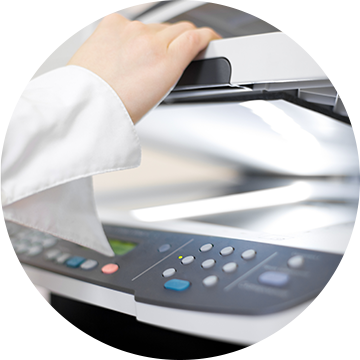Remote signature, digital signature on server side (mass signature) and time stamps, PDF´s, emails, scanned documents, forms, XML and more First, you should find out which legal value is required for your signed files, respectively, the reason why you want to sign them. If, for example, you only require a proof that the data which you stored in the archive have not been changed, a mass signature on server side would be the right choice. However, particularly for the transfer of analog files to digital documents (e.g. for data received from the scanning process) it is often required to make a visual control of the documents before signing them. For this it can be recommended to use a combination of a signature software on client side (in the described scenario the SecArchive client) and the SecPKI signature server in order to verify signature and user and to have a hash tree (long-term archive) generated. You can select between a qualified electronic signature (signature card) and an advanced signature with software certificate (signature certificate). The following process explains the procedure using a qualified signature. The procedure using a software certificate would be the same, but in that case you can do without signature card and card reader. For the qualified electronic signature one or more signature cards are connected with the SecPKI server by using a card reader. For a mass signature card you have to enter the PIN directly when inserting the card. In the properties file you define time period or number of signatures for which the card can be used. When using an individual signature card, however, you have to enter the PIN every time. The number of required signature cards depends on the time period during which a defined amount of files is supposed to be signed. Monitoring of one or several pre-configured directories (the SecPKI server takes automatically the files or document batches, signs them and moves them to an outgoing directory) For both options the SecPKI server verifies the generated signatures and thus the user´s certificates and enters the hash values of the signatures and documents into a hash tree. The hash tree is completed each day with the time stamp of a trust center. By using these time stamps (which are – if necessary – after some years followed by renewed time stamps with updated cryptographic procedures), the evidential value is maintained in the long term. Please also see the page about Long-term archive.Digital signature on server side (mass signature) and time stamp


In the following paragraph we describe how to realize a mass signature on your own server. Some special cases lik batch files as well as archiving of email and print data will be explained on the following page.
Process – Mass signature
The SecPKI server can accept in several ways the files or document batches which are supposed to be signed
▾ Show more
Summary
SecCommerce
Menü
Electronic Signatures
- The Signature Portal
- Signature types
- Signature tools for end users
- FAQ (SecSigner)
- Signatures in web applications
- Substitute scanning and signing (e-records)
- Digital mailroom and digital signature for incoming mail
- Multiple signatures used for workflow
- Verification and creation of mass signatures or individual signatures on server side
- Long term archiving with hash trees
- Remote Qualified Electronic Signature
- Electronic Seal eIDAS
- Identity and Access Management IdM 2FA
Encryption
Private Cloud
High security and easy to use
Client Software
SecSigner
Create electronic signatures
SecCardAdmin
Administration of signature cards
Signatur Workflows
Signature Portal
Complex signature workflows with all signature types
SecArchive
Substitute scanning
SecPKI Server
Central server of several products
SecVerification Server
Verification & decryption
SecSigner Server
encryption & signature creation
Two Factor Authentication
SecRouter
Secures website access
SecAuthenticator
User identification
SecSignID
Two Factor Authentication
SecSignID Server
SecSignID on-premise solution
File storage & sharing
SecSign Portal Server
Secure messaging and file sharing